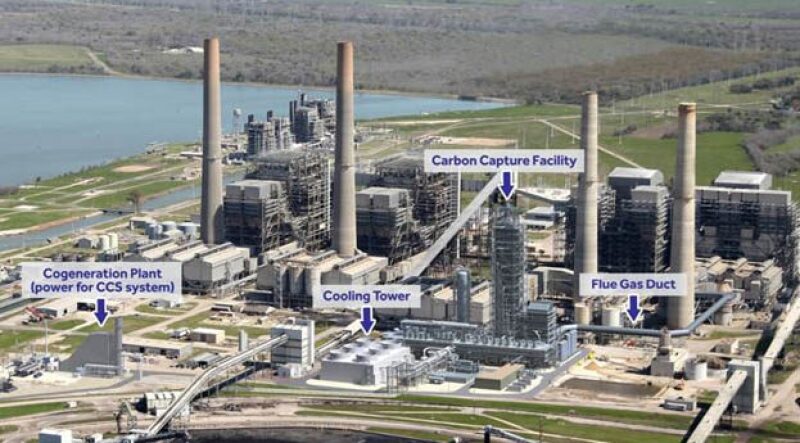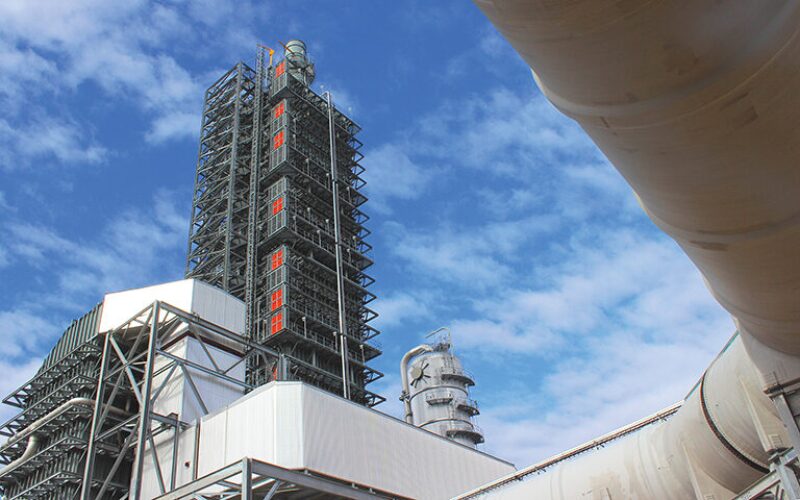After being mothballed for over 3 years, the Petra Nova project, located just outside of Houston, is up and running again.
JX Nippon Oil & Gas Exploration announced recently that operations restarted on 5 September at the carbon capture, utilization, and storage (CCUS) facility, which is one of the largest in the world.
The $1-billion Petra Nova facility was designed to transport CO2 captured from a coal-fired power plant located about 80 miles away for enhanced oil recovery at a mature oil field operated by Houston-based Hilcorp.
Last September, JX Nippon—a subsidiary of Japan’s oil and mining company Eneos Holdings—acquired the entirety of Petra Nova. This acquisition occurred when electric utility NRG Energy sold its remaining 50% stake in the CCUS project for a mere $3.6 million the previous year. NRG remains the owner and operator of the 3.6-GW coal plant.
This month’s restart by JX Nippon is framed as a research endeavor, with the objective “to further expand our knowledge of CCUS technology.”
The Japanese energy company mentioned that the facility is still capable of capturing up to 1.4 mtpa of CO2, despite not having achieved this nameplate capacity yet.
NRG halted the project in May 2020 when its economic viability became uncertain as the COVID-19 pandemic caused oil prices to plummet to historic lows. However, both oil prices and government incentives for large-scale CCUS have since witnessed significant improvements.
US oil prices were averaging around $30/bbl when Petra Nova was closed, in contrast to this past August's average of $84/bbl. Moreover, with the recent passage of the US Inflation Reduction Act, tax credits for CO2-EOR nearly doubled, moving from $35 to $60/ton of captured and injected CO2.
While its application is constrained by availability and logistics, CO2-EOR remains a coveted tool for mature fields. The injected gas is highly effective at lowering the viscosity of residual oil and improving its mobility within a reservoir.
As oil is extracted, the CO2 is separated and reinjected into the field. The Petra Nova project included a monitoring program to determine whether the injected CO2 remained within the intended reservoir or migrated to different rock layers.

Targets Missed, but Technology Worked
Petra Nova was initially deemed a success, having achieved the landmark of 1 million metric tons of captured CO2 within its first 10 months. The project also seemed promising downstream where the CO2 boosted oil production by 1,300% at the brownfield.
However, Petra Nova, which was supported by $190 million in US federal funding, faced various obstacles, achieving only around 90% of its yearly capture goal of 1.4 mtpa during its initial 3 years.
A final analysis submitted to the US Department of Energy (DOE) in 2020 by project developers lists some of those problems as outages at the coal plant, CO2 pipeline shutdowns, takeaway bottlenecks at field facilities, and even a Category 4 hurricane that impacted the entire region in the summer of 2017.
The document also defends the unmet goals, underscoring that Petra Nova was primarily a demonstration project and, at its inception, was the largest post-combustion CCUS facility ever constructed.
“Petra Nova proved that the employed technology works at commercial scale; however, the Petra Nova team encountered several challenges, as one would expect with any first-of-a-kind large-scale facility,” the project developers said, optimistic that these experiences will drive down costs for future post-combustion capture facilities.


